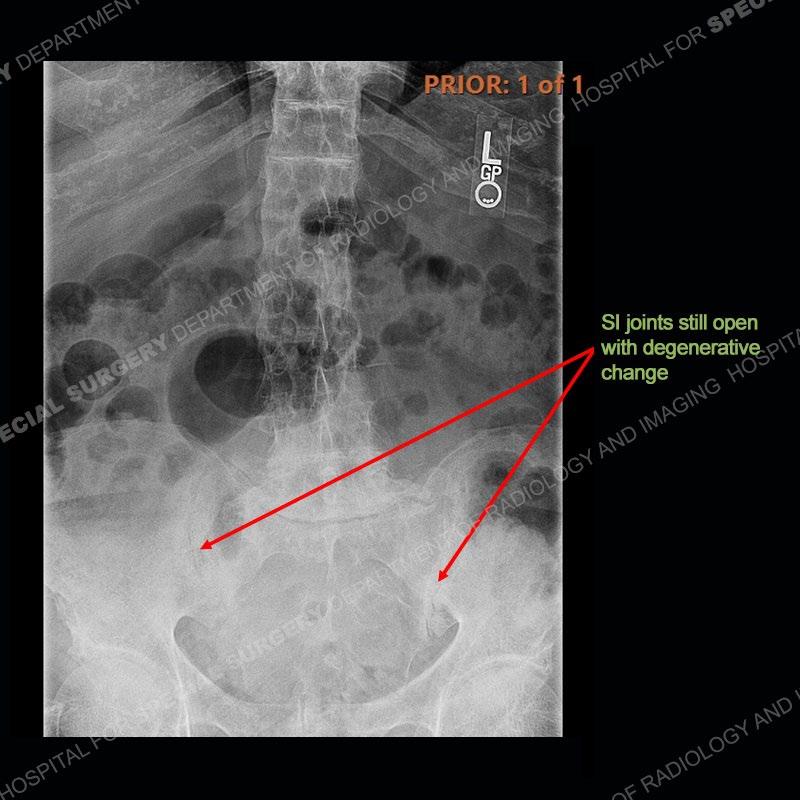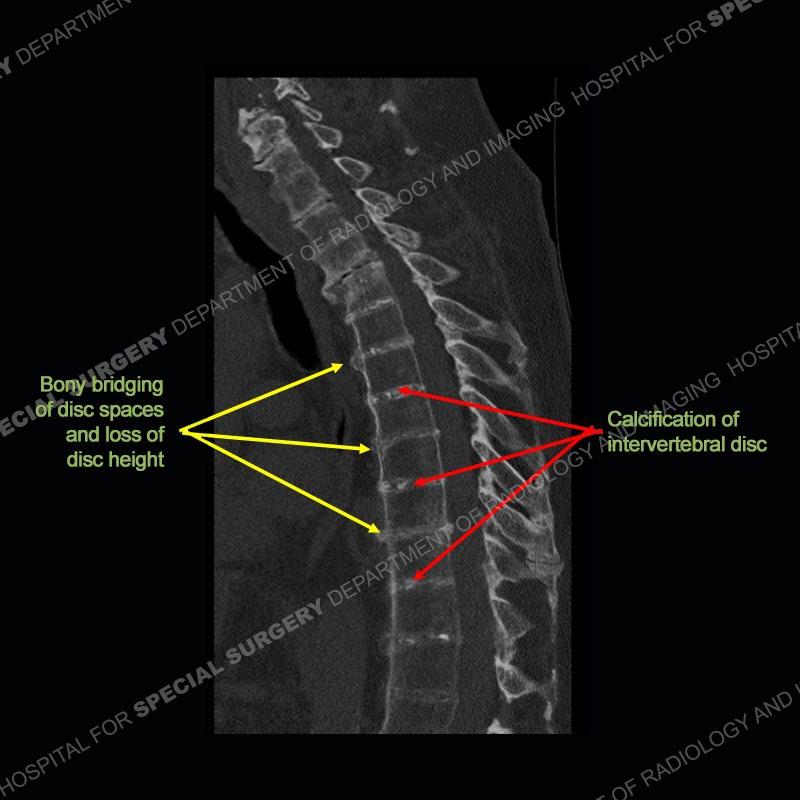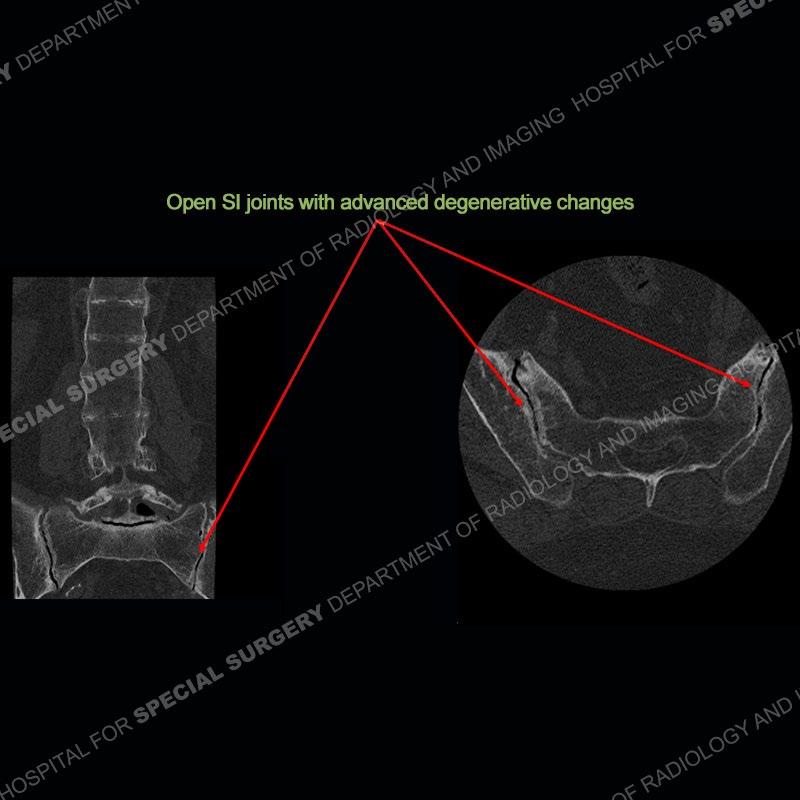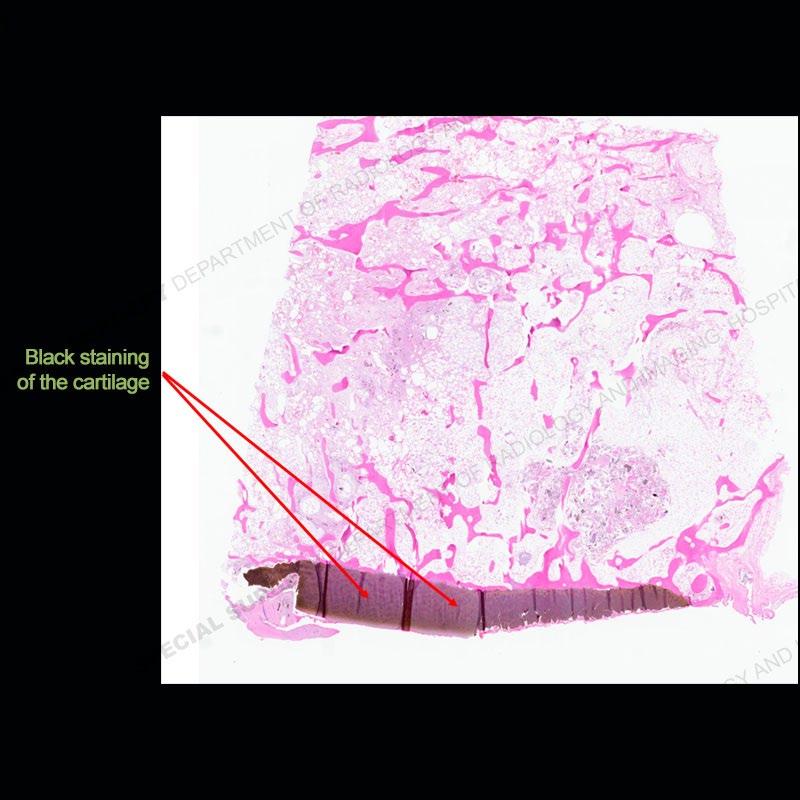


















There is severe degenerative change of the left hip. The lumbar and thoracic spine show calcification of the intervertebral discs, loss of disc space, and bulky bony bridging across the disc spaces. Of important note is that the sacroiliac joints are open. They show advanced degenerative changes but not findings of an inflammatory arthritis. Bilateral knee arthroplasties are present and there are severe degenerative changes of both glenohumeral joints.







A rare metabolic disease also termed alkaptonuria. It results from a lack of homogentistic acid oxidase which results in a build up of this metabolite which gets deposited and oxidized in multiple tissues including, cartilage, synovium and bone. The soft tissues of the joint inclusive of the cartilage and the synovial fluid can be stained a black color or be densely black. Additionally, the urine can be stained black accounting for the term alkaptonuria. These patients frequently present with early onset osteoarthritis of multiple joints. There is classically calcification of the discs and a loss of disc space height. As patients get older, there may be bony bridging across the disc spaces as bulky paravertebral osteophytes.
In comparison to ankylosing spondylitis (AS) where there are thin syndesmophytes of the outer annulus, this bony bridging tends to be bigger and bulkier. In addition, at this stage of AS the sacroiliac joints would be fused, but in ochronosis as seen here, the SI joints are open although with severe degenerative changes. No erosions are present of the SI joints, just advanced degenerative changes. This patient was treated with a left total hip arthroplasty and the black deposition of oxidized homogentistic acid of the cartilage is well shown.


Orthopedic Manifestations of Ochronosis: Pathophysiology, Presentation, Diagnosis, and Management. Joseph A. Gil MD, Joseph Wawrzynski BS and Gregory R. Waryasz MD American Journal of Medicine, The, 2016-05-01, Volume 129, Issue 5, Pages 536.e1-536.e6, Copyright © 2016 Elsevier Inc.
